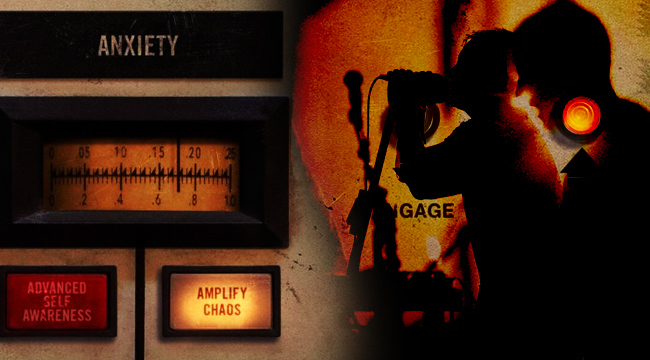
Back in the early ’10s, Trent Reznor appeared to be winding down Nine Inch Nails. After releasing 2008’s The Slip as a free download, Reznor announced the following year that he was retiring the band as a touring unit. And then he entered a fruitful period as a film composer with his long-time musical partner Atticus Ross, winning an Oscar for 2010’s The Social Network and scoring David Fincher’s subsequent movie, 2011’s The Girl With The Dragon Tattoo. Any of Reznor’s old rock-star desires appeared to be satisfied with How To Destroy Angels, the goth-y alt-rock rock band he launched with Ross and his wife, Mariqueen Maandig, in 2009.
Contractual obligations eventually brought Reznor back to NIN — two songs he wrote for a greatest hits album, “Everything” and “Satellite,” hearkened back to the sinewy, aggressive synth-pop of Reznor’s first Nine Inch Nails album, 1989’s landmark Pretty Hate Machine. Instead of tacking these tunes at the end of a retrospective, however, they sparked a rebirth. The freedom of working on a laptop liberated Reznor’s muse, and inspired him to make the best NIN album since the ’90s, 2013’s Hesitation Marks. By this time, he had also un-retired as a live act. Nine Inch Nails was back and, incredibly, pretty much as good as ever.
At the end of 2016, Nine Inch Nails released Not The Actual Events, the first in a planned trilogy of EPs that might eventually be reconfigured into an album. In contrast with the lean, pop-oriented songwriting of Hesitation Marks, Reznor and Ross drew on the ambient dissonance of their film work for Not The Actual Events, cloaking even relatively straight-forward rock songs like “She’s Gone Away” and “The Idea Of You” in layers of dark sonic subterfuge that obscured the hooks and amped up the cinematic menace. It’s no wonder that David Lynch was compelled to include “She’s Gone Away” in a recent episode of Twin Peaks: The Return — the songs on Not The Actual Events already sounded like a score to a horror movie that didn’t exist yet.
This trend continues on Nine Inch Nails’ latest EP, Add Violence, with Reznor and Ross taking NIN even further in the direction of full-on musical abstraction. While Reznor has always been interested in creating vast soundscapes that can’t be contained by the structures of the four-minute pop song — this was true of large sections of his 1999 masterpiece, The Fragile, as well as 2008’s all-instrumental Ghosts I-IV —
Add Violence feels more like a beautiful, if frequently unsettling, 27-minute piece of music that’s been parceled into five tracks. Taken together, Add Violence evokes a series of images that add up to a haunting mini-movie of the mind.
Add Violence‘s opening track and first single, “Less Than,” is a bit of a red herring — its immediate drum-machine bounce and blown-out chorus instantly recalls the ’80s prime of Depeche Mode and New Order, as well as Pretty Hate Machine and the catchy pleasures of Hesitation Marks. But the next four tracks unfold at a far more deliberate pace, creating unbearable tension by sublimating the aggression promised by the EP’s title.
“The Lovers” moves along via a faint yet insistent metronomic pulse, with drip-dropping synths bleeping and blooping over an inaudible whisper. As he does throughout Add Violence, Reznor lets much of “The Lovers” play out without discernible vocals — he doesn’t even enter the next song, “This Isn’t A Place,” for almost two and a half minutes, allowing instead for nausea-inducing strings to commune queasily with a sinister, circular piano riff and the mechanical snap of an 808 machine.
Only “Not Anymore” offers the familiar release of a conventional Nine Inch Nails song, building to a reliably cathartic chorus before Reznor and Ross return to the discomfort of spooky atmospherics, setting the stage for the EP’s centerpiece, “The Background World.” At nearly 12 minutes, “The Background World” takes up half of Add Violence‘s running time, but it’s designed like music that’s meant to play over the final credits of an apocalyptic thriller, climaxing with several minutes of squalling noise that drown out the song’s doom-laden synth-pop melody.
While Reznor has been on a roll with this refurbished version of Nine Inch Nails for several years now — the project has evolved into yet another avenue for his inspired collaboration with Ross — Add Violence stands apart as a decidedly uncommercial effort that nevertheless will feel inviting for NIN acolytes and newcomers alike. While Hesitation Marks might’ve come off to some as a bit too soft, Add Violence is as uncompromising as anything Reznor has ever released under the Nine Inch Nails banner, while also exhibiting the considerable compositional skills he’s developed outside of the band.
Like his hero and former collaborator, David Bowie, Reznor is the rare rock star who can indulge his arty, esoteric impulses without sacrificing his more populist instincts. He’s charismatic even when he’s obtuse, a rare gift. On Add Violence, Reznor makes the seemingly incompatible sides to his musical personality work in service of each other, resulting in a record that always feels like Nine Inch Nails, even as it moves in new directions.






